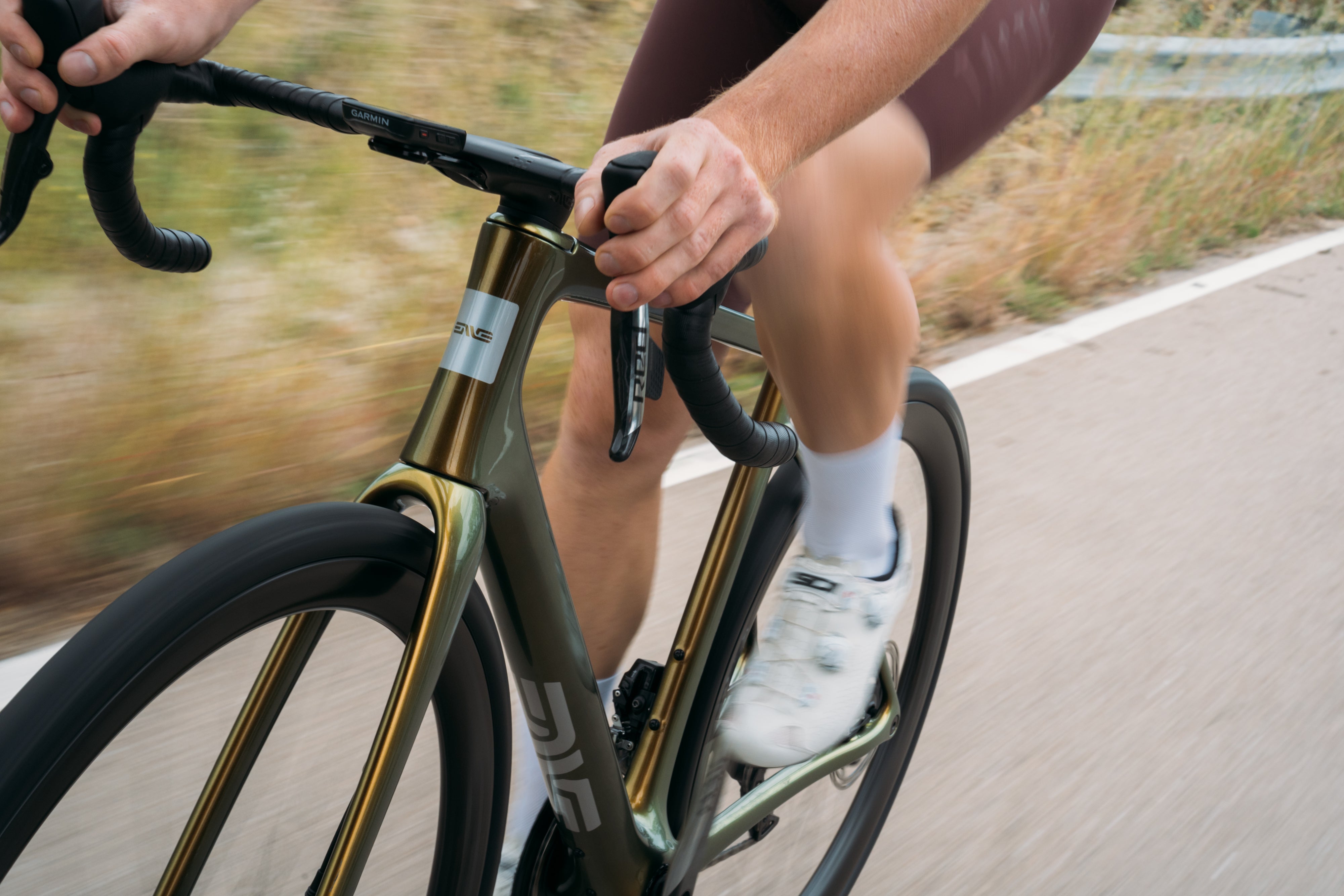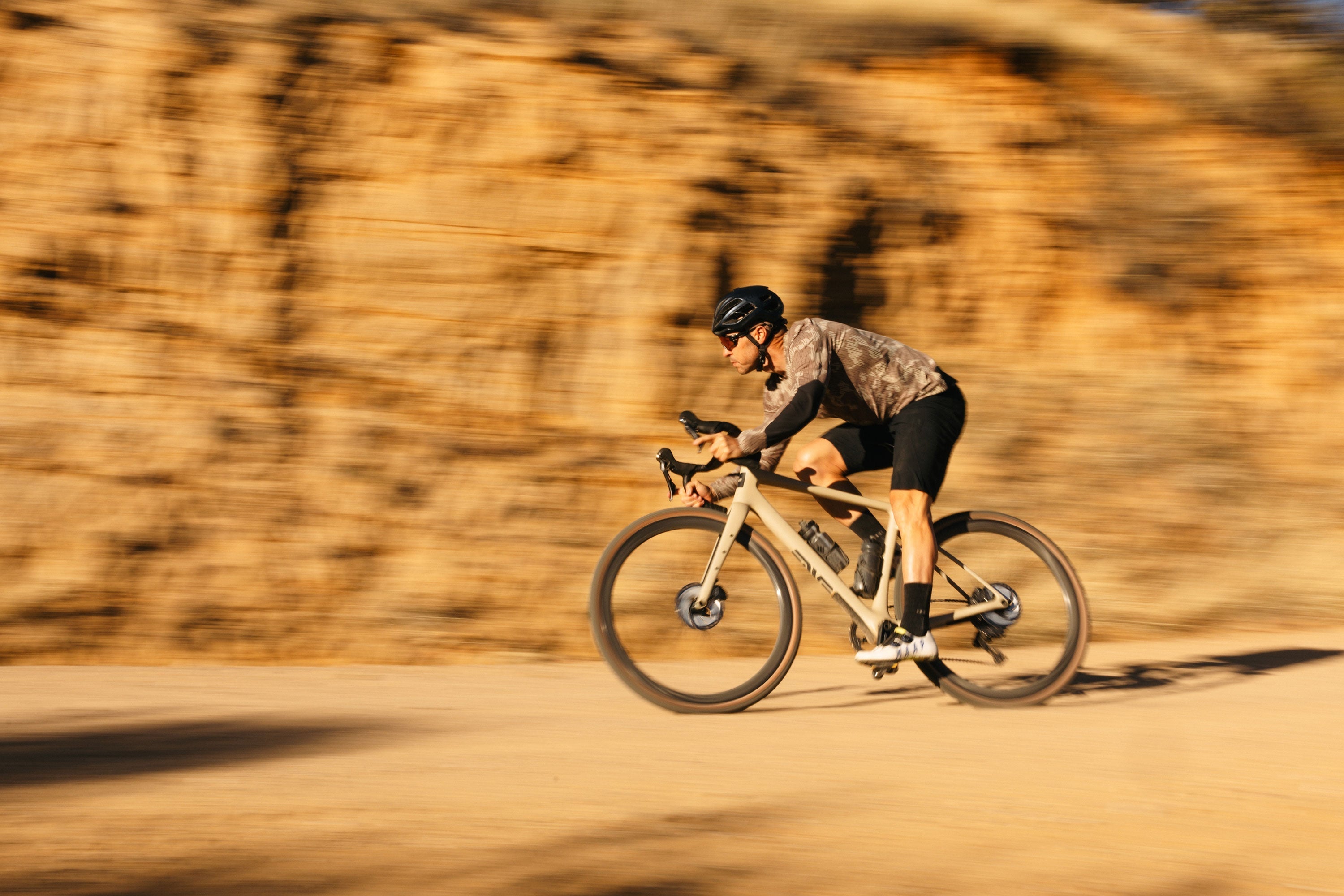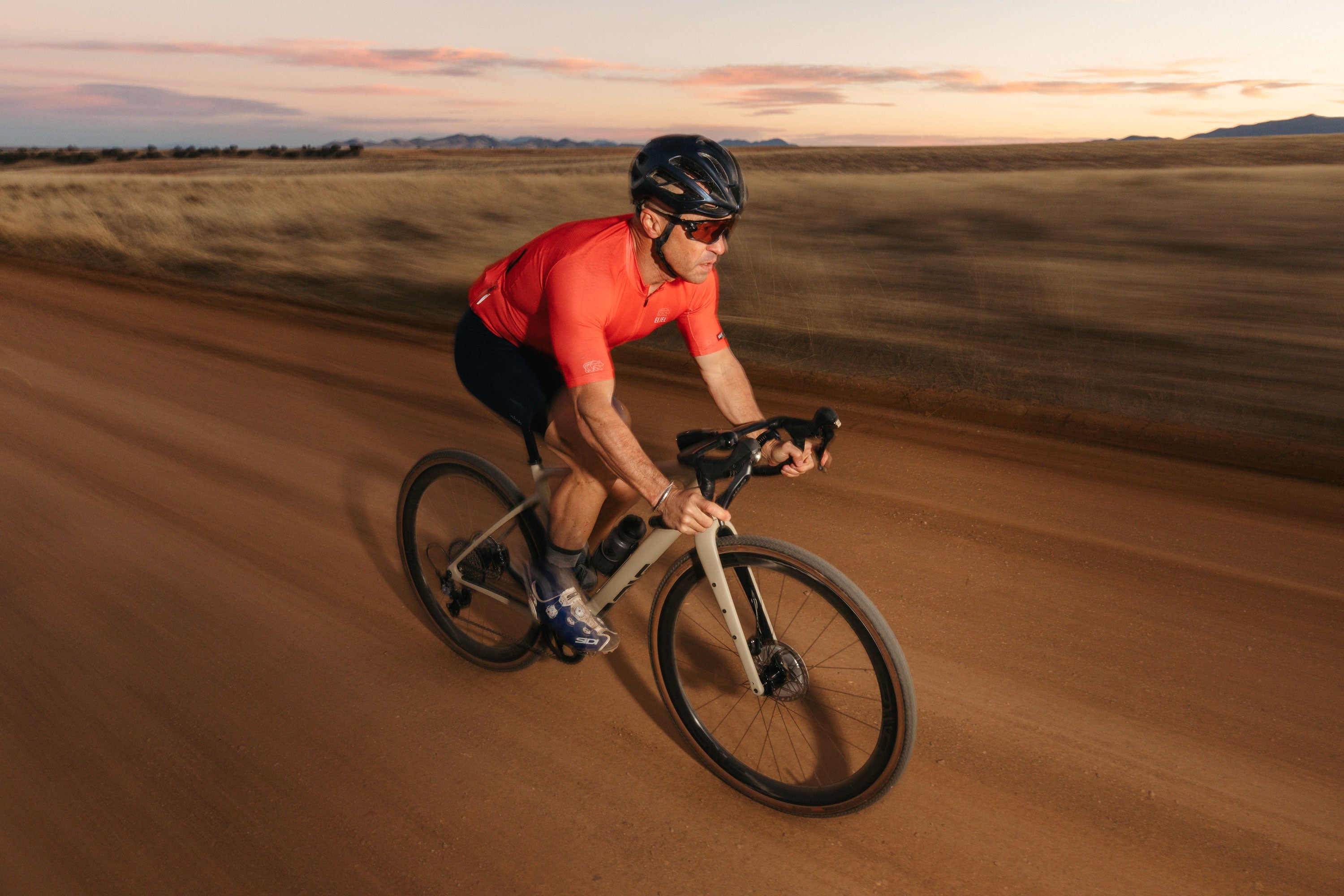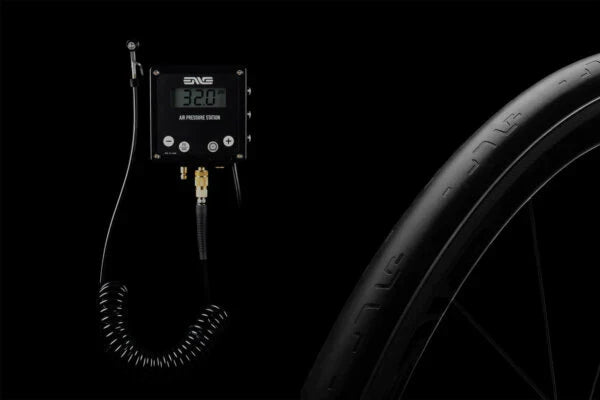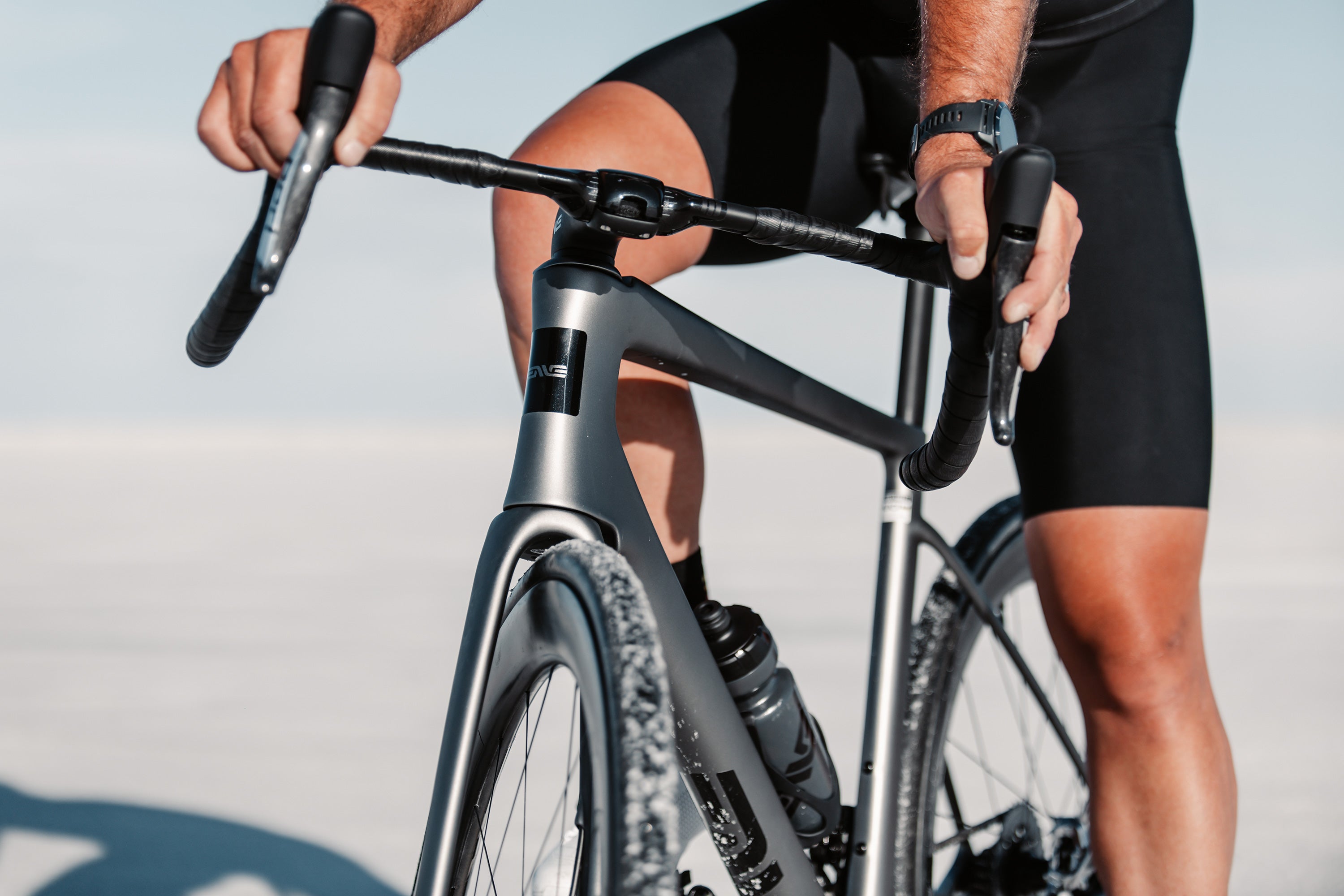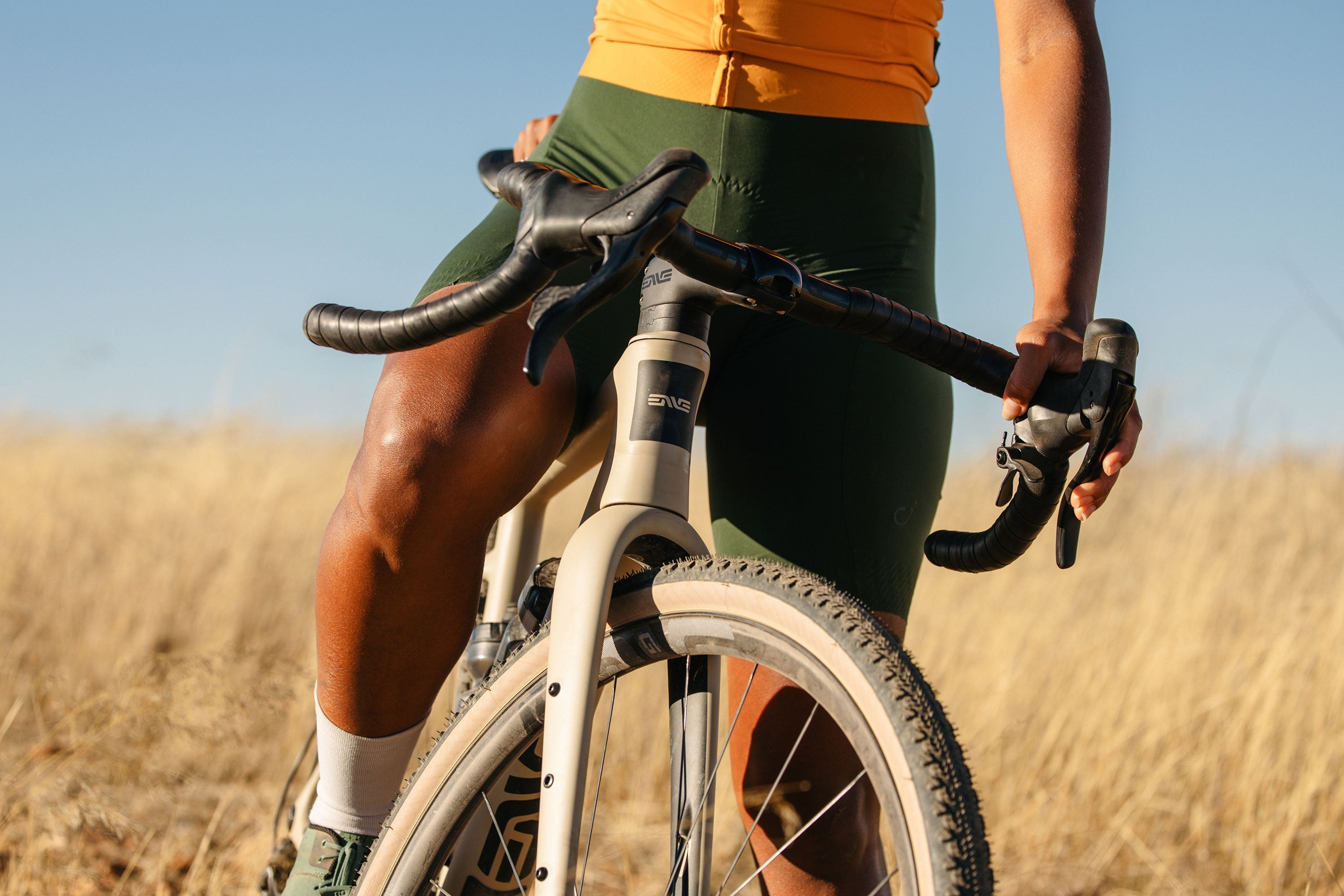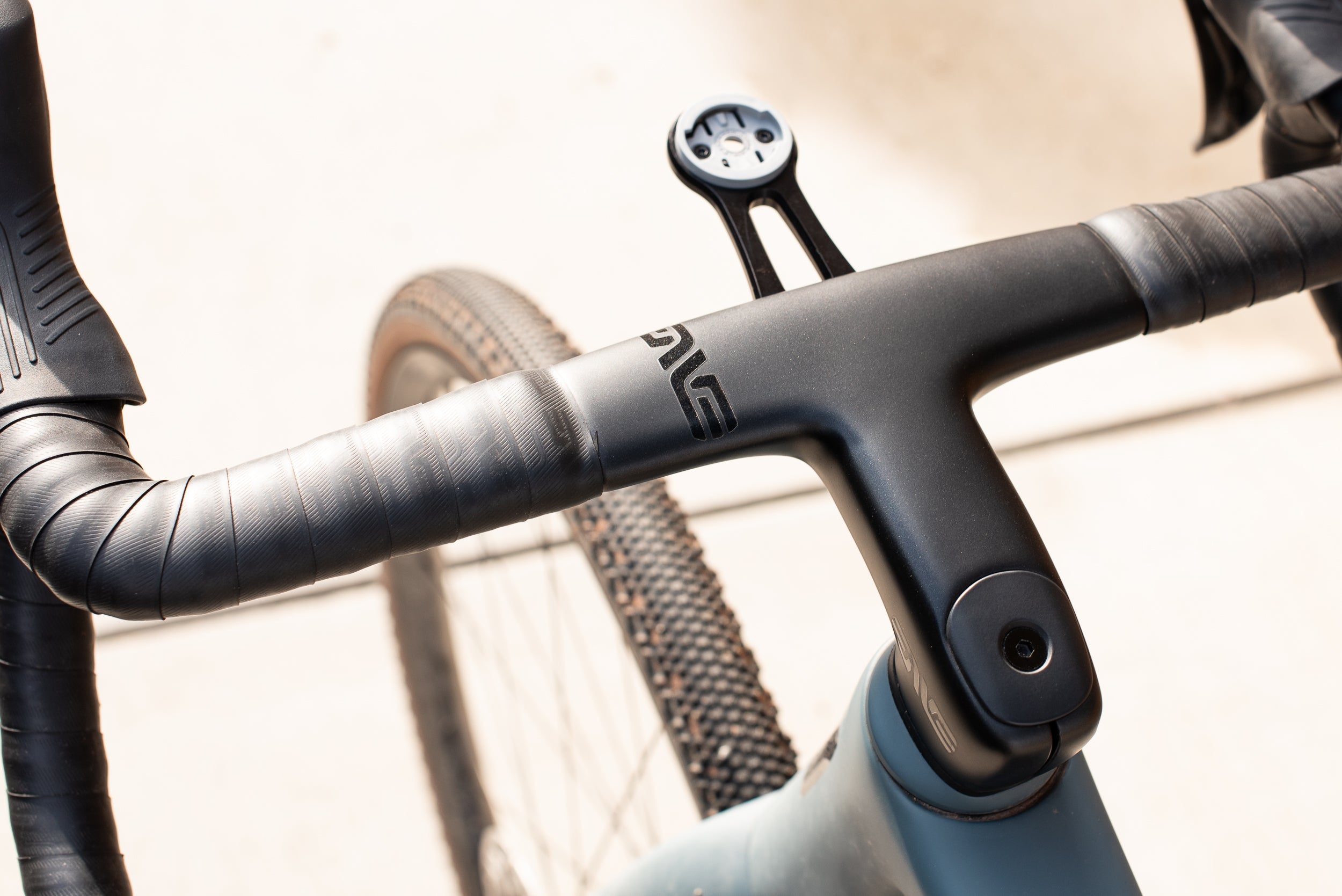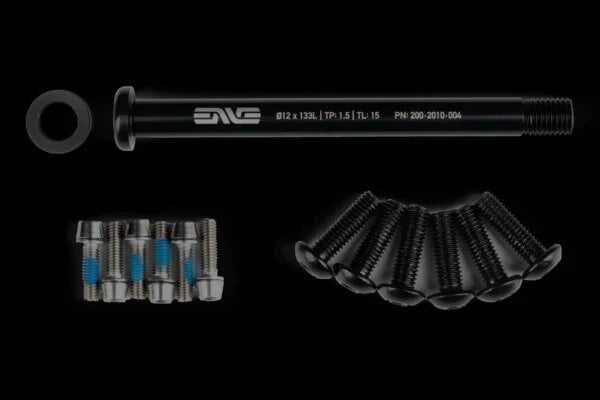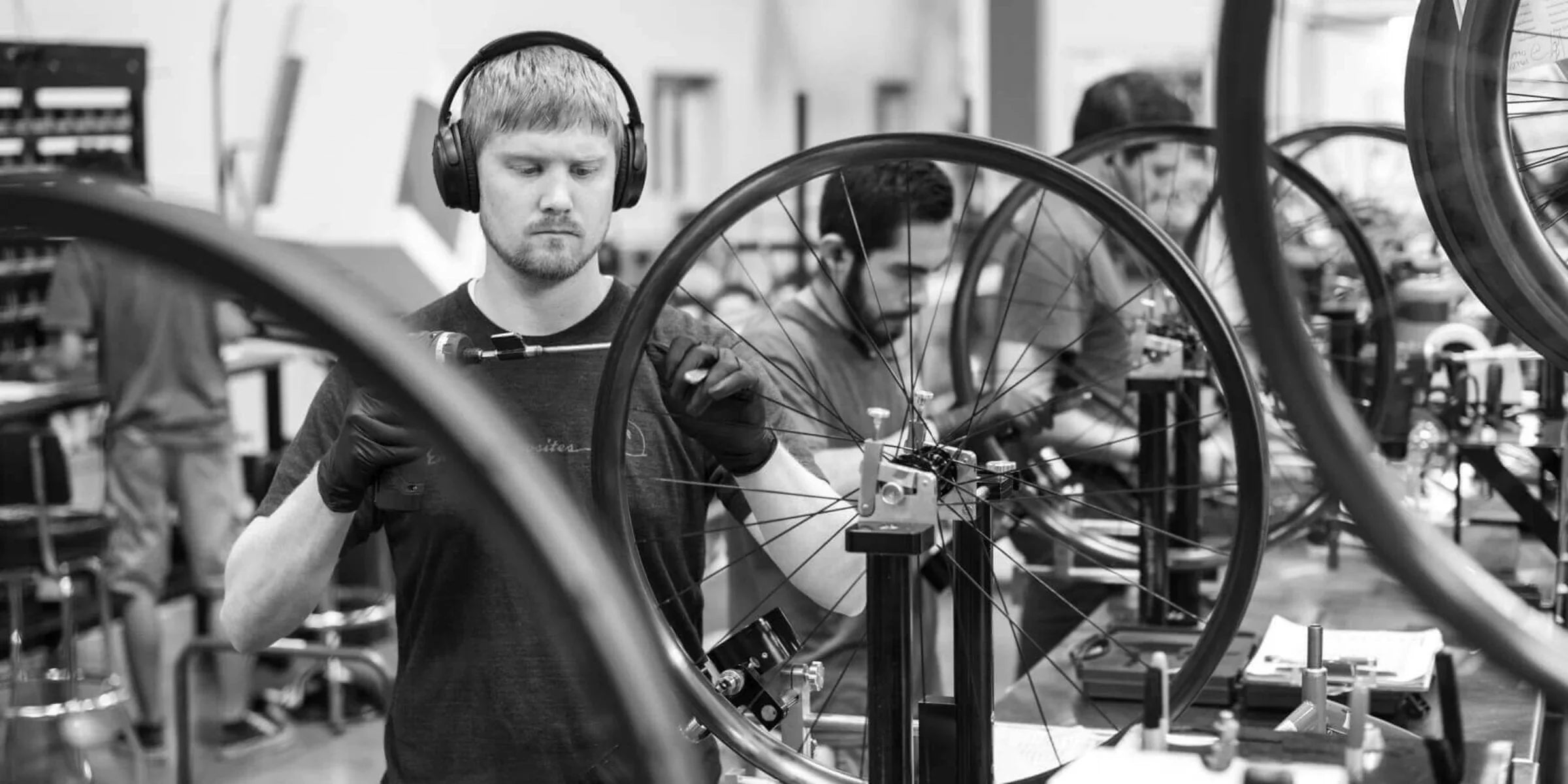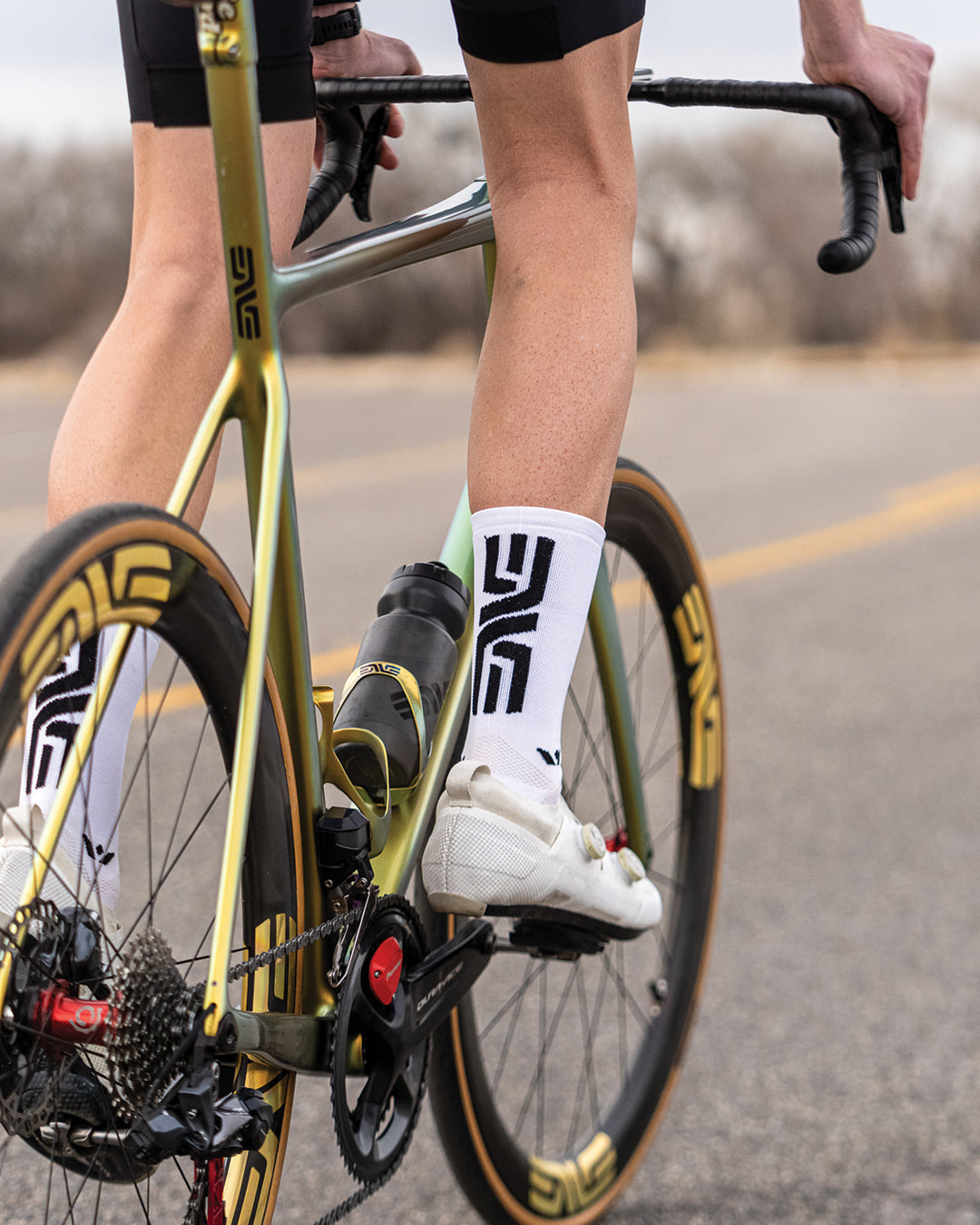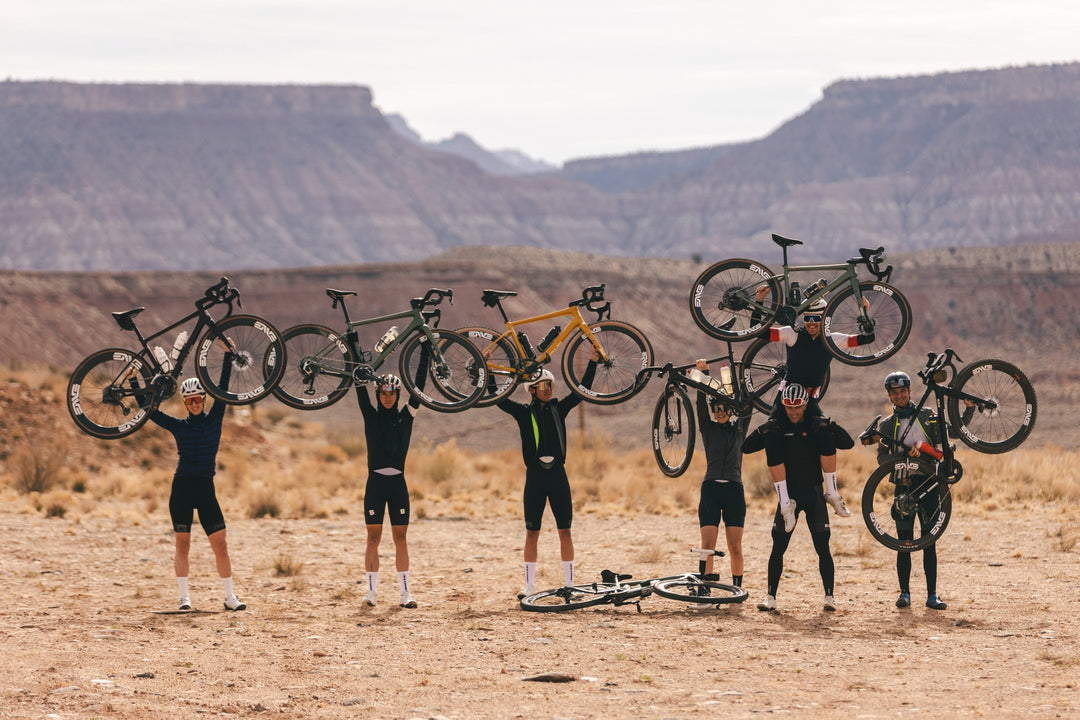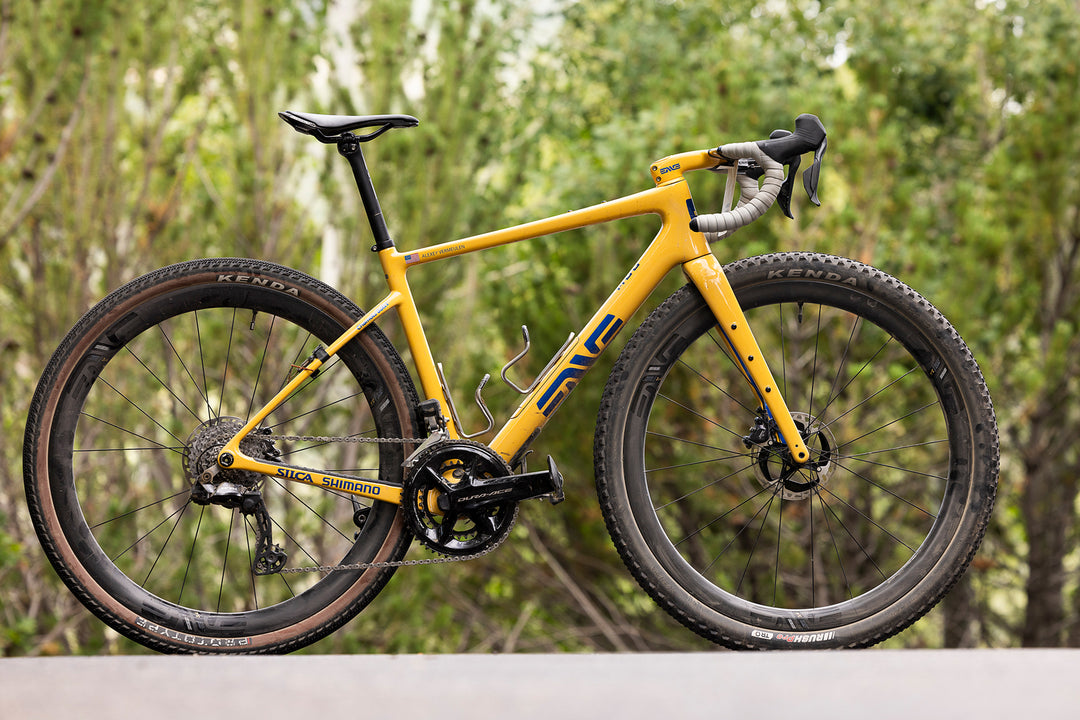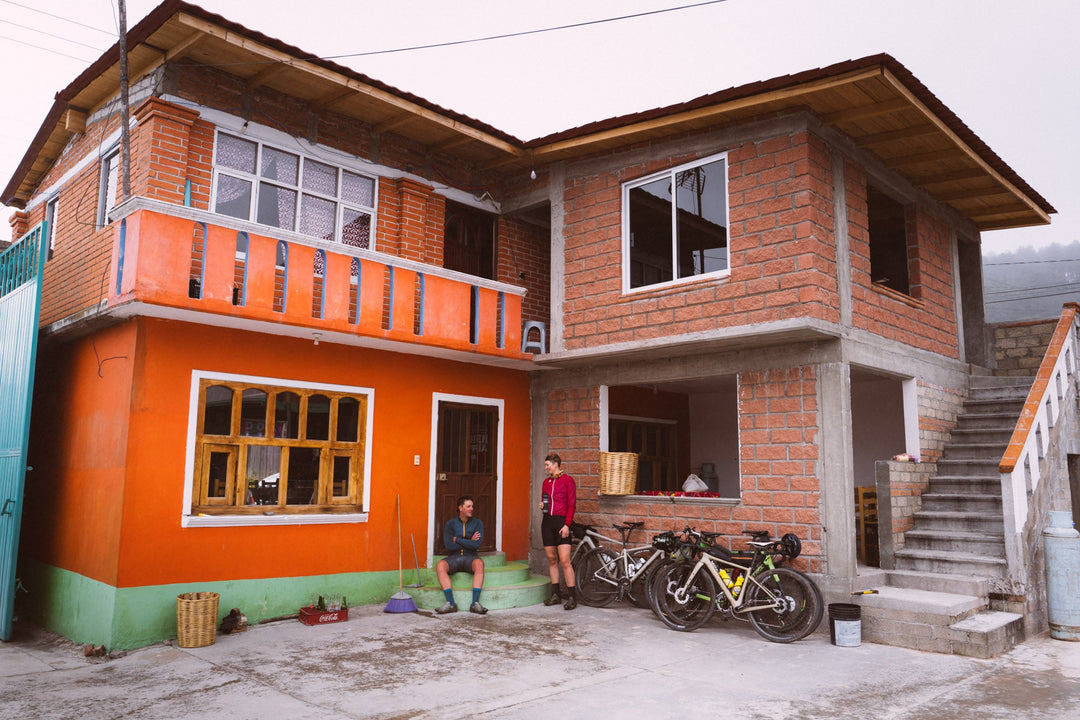Behind The Product: Alloy Road Hubs
ENVE’s mission is to create a better ride experience for you and we do this by combining the science of engineering with insight gleaned from the saddle.
THE INSIGHT
After more than a decade of pairing ENVE carbon rims with the leading hubs of our time, we have an intimate understanding of what makes these hubs great, and what could make them better. This isn’t just our opinion either, it also belongs to you. You’ve been buying ENVE wheelsets with these hubs and riding them in nearly every weather and geographic location around the globe. Whether directly or through our partners, you report back to us on what went well and what could be better. Our own ride experiences fueled by your feedback opened the pandora’s box that is hub design and ultimately the ENVE hub project.
Here is a list of what you asked of your hubs and what the ENVE Road Hub was engineered to deliver:
- More wheel stiffness (Stop my wheel from rubbing on my brake pads and/or frame)
- Better bearing life and reliability (I’m upset that after zero to few miles my bearings feel rough)
- Less maintenance (I don’t like having to adjust play out of my hubs with a tool I can never find)
- Higher engagement ( I want my wheel to engage sooner in my pedal stroke)
THE SCIENCE
The list above is fantastic, but in no way simple or inexpensive to achieve. Ultimately, it’s a game of balance and compromise. It’s not that other hub manufacturers don’t know how to improve their hubs to address your feedback, but their priorities diverge from ours. Some want the title of lightest weight, highest engagement, fastest rolling, or stiffest wheel build. At ENVE, we take a no holds barred approach and are guided by the belief that holistic performance trumps focus on one dimensional metrics and attributes.
Here are some considerations that highlight the tradeoffs of hub design and how ENVE road hubs raise the bar for real world performance.
WHEEL STIFFNESS (LATERAL, TORSIONAL)
Hub geometry is a key player in building a high performance wheelset. Flange diameter, flange spacing, and lacing patterns are integral in establishing wheel stiffness. So generally speaking, a hub with taller and wider flanges will build a wheelset more resistant to lateral (side to side) deflection. The tradeoff however is that the larger and wider the flange, the heavier the hub.
The ENVE Road Hub addresses this reality with a unique flange design in which the spoke holes are moved closer together which allows the large 55mm flange to be machined for maximum weight savings achieving the same weight as hubs with smaller flanges and symmetrical spoke hole positioning.

What appears at first glance to merely be some creative machining for aesthetic purposes is actually the byproduct of striking a refined balance between flange geometry and weight savings.
While the majority of wheel stiffness as it relates to hub geometry is focused on reducing lateral deflection, torsional stiffness (think responsiveness when accelerating/decelerating) must be considered as well. The spoke hole lacing pattern assists in maximizing torsional stiffness by improving the spoke angles to ensure that the spokes transmit your power input efficiently.
In the chart below, you can see that the ENVE hub utilizes the spoke lacing pattern to create the longest and therefore most efficient lever arm (not longest spoke) on the hub flange while at the same time keeping total flange area to a minimum, reducing weight.

BEARING EFFICIENCY VS. LONGEVITY
Bearings are a component in and of themselves that play a major role in establishing hub, wheel, and ultimately rider performance. After a thorough evaluation of bearings ranging from hybrid ceramic, carbide steel, and stainless steel constructions, we ultimately decided to spec full stainless steel bearings in our road hubs.
The bearings selected for the ENVE Road Hub are premium grade, and were custom made for ENVE. The full stainless steel races promise that riders living near the coast, or riding in wet conditions will not experience rusty and corroded bearings, races, or external surfaces. To protect the internal balls we opted for full contact seals on external bearing faces to prevent debris ingress while the inward facing seals are non-contact seals which help reduce friction between the bearing and seals – improving efficiency. Again, this is an exercise of finding a balance between performance as defined by bearing efficiency and longevity.

SO WHY NO CERAMIC?
It comes back to the discussion above about finding balance between efficiency, longevity, and maintenance requirements. Ceramic bearings can certainly be fast and efficient, but in our experience and yours, they require frequent maintenance to ensure this efficiency. There is also a well documented discussion online of the merits and performance of ceramic bearings in cycling applications. We can spare you the research though and inform you that the evidence in favor of ceramic bearings for low RPM applications is thin. Given that much of ceramic bearing’s low drag is achieved with low friction non-contact type seals, they are easily contaminated. If you fail to maintain these bearings, performance diminishes rapidly (possibly in one wet/dirty ride) and so does your experience. By contrast, our custom stainless steel bearings require no maintenance and in our testing have proven to roll as smooth and fast, as when they were new, after literally thousands of miles in wet and muddy conditions. Additionally, it’s not the material itself that achieves this efficiency, rather the level of manufacturing precision. In other words, a steel bearing is capable of outperforming a ceramic bearing.
Here’s a third party report on ceramic vs. steel which sheds more light on the topic. As a side note, we are using the NTN bearings in all our hubsets.
THE NO MAINTENANCE SOLUTION TO BEARING PLAY – INTRODUCING PERFECT PRELOAD™
There is much more to hub efficiency and bearing longevity than the bearing itself. One of the most important developments that the ENVE Road Hub brings to the aftermarket is a technology called Perfect Preload™. So what is preload? Preload is the axial load placed on the bearings to ensure rolling efficiency and when set correctly, eliminates side to side (lateral) play in the wheel. There are a number of ways to manage this. Most manufacturers rely on preload tensioning devices like lock rings or lock nuts to achieve preload. Others rely on machining tolerances to deliver perfect “stack-up” of the bearings. While both of these designs are proven to be generally reliable, we have seen the limitations and challenges of both systems. Hubs with preload tensioning devices like lock rings are subject to human error. Too tight and the bearings run inefficiently and are damaged, too loose and you’ll experience later wheel play and risk damaging the hub and bearings. With stack up style hub construction, any imperfections in the machining tolerances, and stress is driven into the bearings causing premature wear and failure.

The ENVE solution takes from these learnings and delivers what we call Perfect Preload™. Our system ensures that the axial tension on the bearings is precision tuned and fixed from the factory. This is accomplished via a tuned wave washer compressed between a snap ring installed on the hub’s axle and the bearing itself. This design means that the bearing is optimally loaded and you’ll never need to bust out the tools to eliminate annoying bearing play or achieve greater rolling efficiency.

THE ID360 DRIVE MECHANISM AND FREEHUB BODY
While there are a variety of drive mechanisms being used in the modern road hub, the two most popular systems are the pawl type system and a ratchet style system. The ENVE Road Hub utilizes a ratchet style drive system that was developed by Mavic called ID360 (Instant Drive 360). Ratchets when compared to pawl type systems require fewer moving parts and provide more positive and instant engagement feel because there is no flex or slop in ratchet engagement (assuming you aren’t running a low tooth count ratchet). While some ratchet systems require two springs, ID360 uses only one. Fewer small and moving parts ultimately means that the hub can be lighter weight and most importantly you are less likely to lose a vital hub component while traveling with your bike.
The ID360 ratchet features 40 points of engagement which strikes an optimal balance of durability, response, and drag reduction.

While some manufacturers choose steel, titanium, or other aluminum alloys as their material of choice, we opted for 7075 due to its high strength and stress resistance. Finally, we hard anodize the surface to further prevent cog bite. While steel and titanium can accomplish this task as well, they result in a heavier hub with only marginal performance gains in terms of preventing cog bite.

SWEATING THE SMALL STUFF
We often joke that the best products are the ones that don’t piss us off. Never has this been more true than with hubs. We found that a common annoyance for riders is having your cassette with freehub fall off when you’re changing a flat tire or simply pulling your wheelset off the bike to travel. Sometimes when the cassette falls off, springs, ratchets and pawls go with it. Lose these items and your day just became exponentially less fun than anticipated. To address this we beefed up end cap retention using wire form retention vs. o-rings where the rear hub is concerned. Up front, rim brake hubs feature stainless steel end caps installed on an aluminum axle. While aluminum end caps are certainly lighter, the steel end caps are more durable and deliver a more secure interface between the fork and quick release.

CONCLUSION
To the casual observer our solutions to common hub problems appear simple – but that is the beauty of ENVE. We are expert at taking complex real world performance problems, breaking them down, and finding functional solutions. While these solutions may appear simple, they are not always so, or often require a substantial investment that falls outside of what other hub makers are willing or able to make. Such is the case with the ENVE Road Hubs. We set out to improve your ride experience with a no holds barred approach to creating a better hub. As a result, you can now ride faster, longer, and more efficiently than ever before thanks to the ENVE Road Hub.


